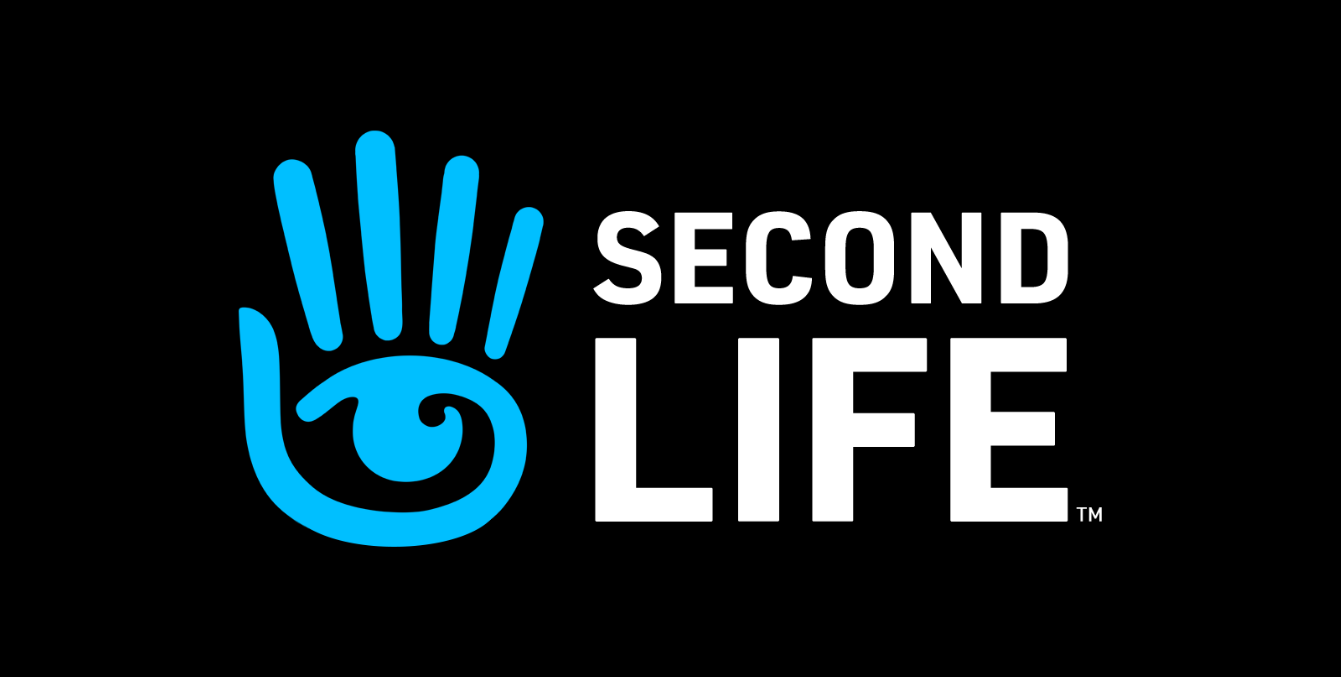Insights
The metaverse of the future: How do we get there and what could it look like?
5 minute read
13 December 2022
The metaverse of the future: How do we get there and what could it look like?
Our last blog looked at where it all started and how it has evolved into what we call the metaverse today.
So, what’s next in the world of the metaverse? Well.. it’s widely predicted that it will become an integral part of the internet’s evolution by as soon as 2030.
In this blog we’re going to take a closer look at the layers of the metaverse that industries and brands will need to embrace and create to make this happen. It’s going to take a lot of work! As described by Jon Radoff, there are 7 layers made up of different areas of technology & feature development that need to come together to create this new generation of the internet…
Let’s explore the 7 layers of the metaverse
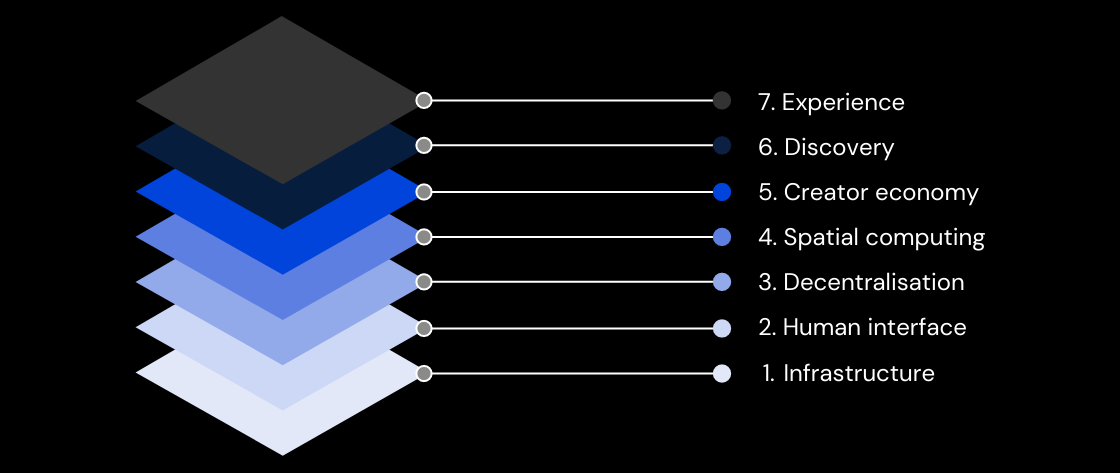
1. Infrastructure: We need faster Wifi everywhere
It will need to deliver hyper-realistic graphics, low latency, high refresh rates, high frames per second. This will need improved processors which could require the implementation of optical processors that use light rather than electrons (and drastically reduce energy consumption).
2. Human interface: We need better hardware to interact with it
VR / AR devices need to be further developed as we are going to need better tech that is more wearable and more powerful.
We also need more work on Haptics (technology that can create an experience of touch or motion) to help people engage with virtual experiences. It's widely reported that over 70% of people say they want more of this.
Debatably less intrusive, but if we are talking about 2030 then maybe Smart contact lenses could also be a realistic option!
And finally what about neural interfaces? On our journey to becoming cyborgs we already have external Brain Computer Interface devices that help us communicate with these environments.
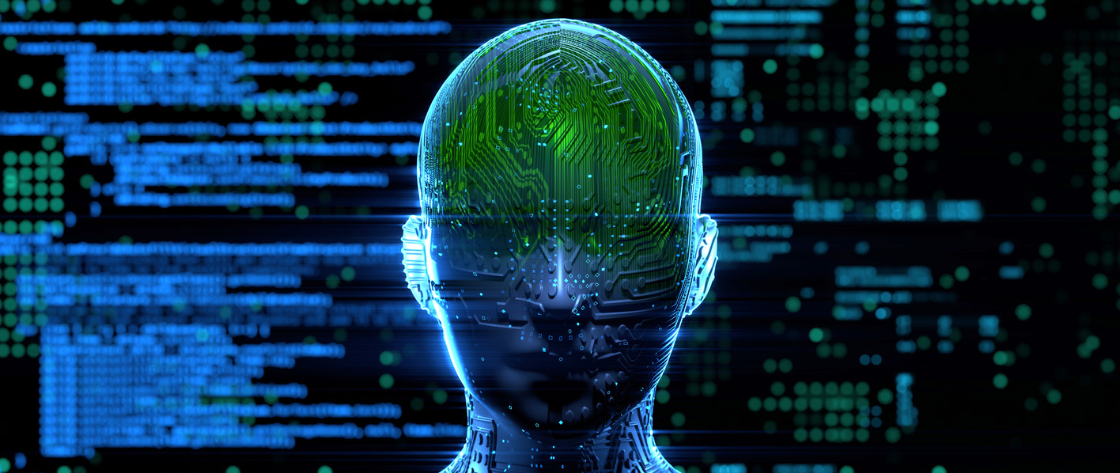
3. Decentralisation & Interoperability: We need everything built for it to work together
Decentralisation is critical to the ‘Interoperable’ and ‘virtual economy’ elements of the future metaverse. This blockchain technology will allow for a sovereign identity and social graph, which will let people move frictionlessly between different worlds/experiences.
We also need blockchain and smart contracts optimised for the sort of microtransactions required by games and metaverse experiences of the future, currently this means buying avatars, outfits, and accessories and land in virtual worlds but imagine what else it could encompass?
And finally, of course, what we and the whole industry needs is standards! Interoperability is what is required and we need some of the big players to play nicely to get there.
4. Spatial computing: We need the worlds to feel more real and for our real actions to affect it
The metaverse of the future will need continued development of 3D engines of VR & AR to display geometry and animation (Unity and Unreal) such as:
- advances in rendering and lighting
- Super-fast refresh rates (to avoid nausea)
- specialised tools and faster workflows for creators
It will also need 3D reconstruction technology with geospatial mapping that supports creation of photorealistic objects like buildings, a high-definition 3D environment and physical locations inside the metaverse abiding by the basic laws of science and physics:
- gesture and voice recognition
- Spatial audio
- IOT and sensor devices
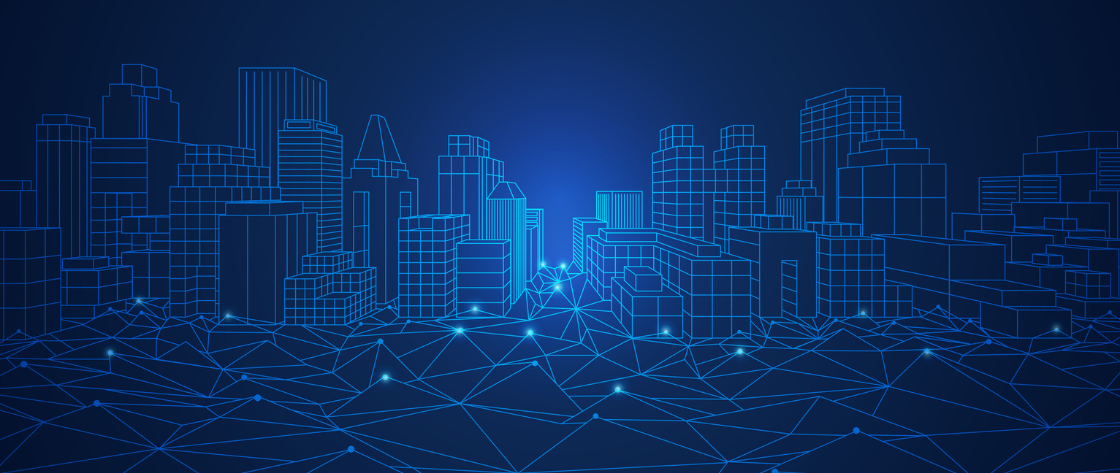
5. Creator economy: We need people to be able to easily create within it
We’re right at the beginning of this journey using brand new tech, at the next stage we need more tools and middleware to empower, and finally we have the Wix or Shopify of the metaverse that enables mass democratisation of asset and experience creation.
When we reach that point, and with the help of AI, content isn’t simply generated by people, it emerges from their interactions and feeds into the substance of the experiences within their communities. Content generates content: a virtual flywheel of content, events, and social interaction.
6. Discovery: We need a metaverse ‘google’
We need the metaverse equivalent of google search (or ChatGPT) so you can find what you’re looking for. Currently there are walled garden portals like Oculus but what will emerge for the worlds of the metaverse?
7. Experience: We need experiences within it that you actually want to go to
So what happens if we get all this stuff done? What does all this mean for our future experiences? What happens when physical space is dematerialised?
Formerly scarce experiences may become abundant: scarcity of space is gone, and opportunity is abundant in every sector!
What kind of experiences could be available to us?
Gaming
There are hundreds of examples already in Roblox, but thinking beyond that - a new generation of AR could create great life-gaming experiences, plus in the growing esports market - think live tournaments and spectacle events - being part of the crowd watching your child play rocket league?
Shopping
Again, the augmentation of physical spaces has already begun, but this experience could be brought to your home. In VR there will be huge and elaborate temples devoted to shopping, virtual try-outs, social shopping, connected virtual and physical goods.
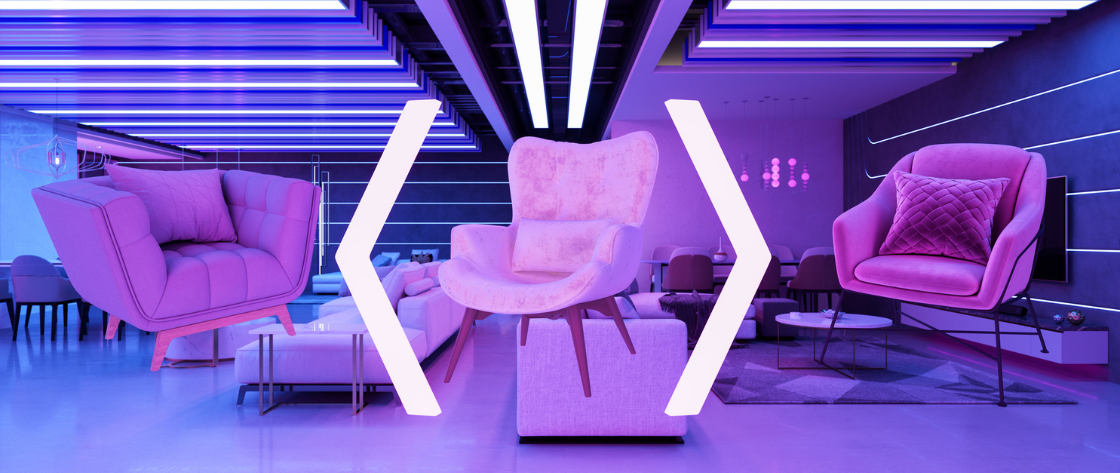
Workspace
In the workplace we can have augmented environments to increase productivity and collaboration and reduce waste. The continued evolution of Digital Twins bringing together multi-disciplinary collaboration on design, architecture and engineering could create interoperable immersive spaces that simulate machines, fluids, physics and more.
Some suggest that these environments will be so sophisticated that all engineering, design and testing will be done in the metaverse and the outputs simply printed to the real world!
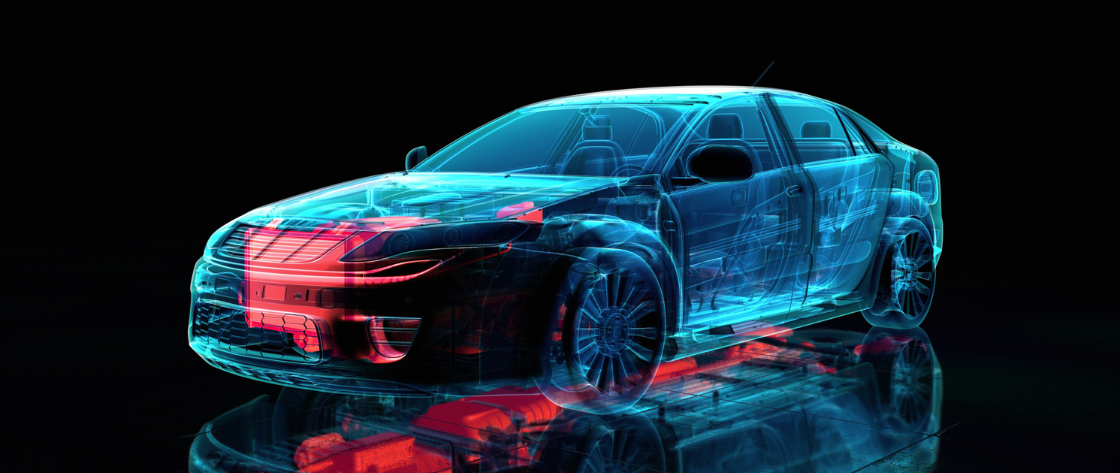
Travel
Enhance any visit anywhere with all the information available, or visit anywhere in the world, any time you like with anyone you like, at any time of year, and in any year - guided by an AI local!
Learning
What could it mean for learning? Immersive learning, classroom SIMS (School Information Management System), in-person with expert educators, gamified learning, augmented training for skills. For example, learn in a Harvard lecture hall from Zambia.
Fitness
The next generation of Peloton with immersive gamified fitness.
Music & arts
Live events, collaborative experiences, front row for everyone, immersive theatre, live action roleplay or even backstage passes to your favourite shows, not just watching someone's Iphone clip.

So, what does the future potentially hold?
Undeniably there are massive challenges ahead but, if it comes together, we see a future that is really exciting. If we get it right this could be a new generation of the internet that changes all our lives.
However, we must realise that it will be a network of 3D virtual worlds focused on social connection.
And imagine if the promise of AI comes through as well - it's widely thought that we might be guided and accompanied by AI virtual characters throughout these experiences. We still have lots of unanswered questions though that will unravel over the next few years…
- How are we going to get there?
- One world? or lots of worlds?
- Is the internet going to be a metaverse?
- When is a metaverse not a website?
- Is it the internet you can touch?
- Will we even call it the metaverse?
A true metaverse requires seamless interoperability among users and platforms, based on web 3.0 and still-to-be-determined standards. While this interoperability will offer new possibilities to reach and understand customers, it will also raise new challenges for gathering and protecting data, and for cybersecurity and privacy.
It may also undermine business strategies built around keeping users and their data in a given platform. Competitive advantage may shift to those companies that offer (through hardware or software) trusted ways for users to enter the metaverse.
So, in conclusion we think that the metaverse is not going to be ‘a’ metaverse, it is going to be the next generation of the internet.

